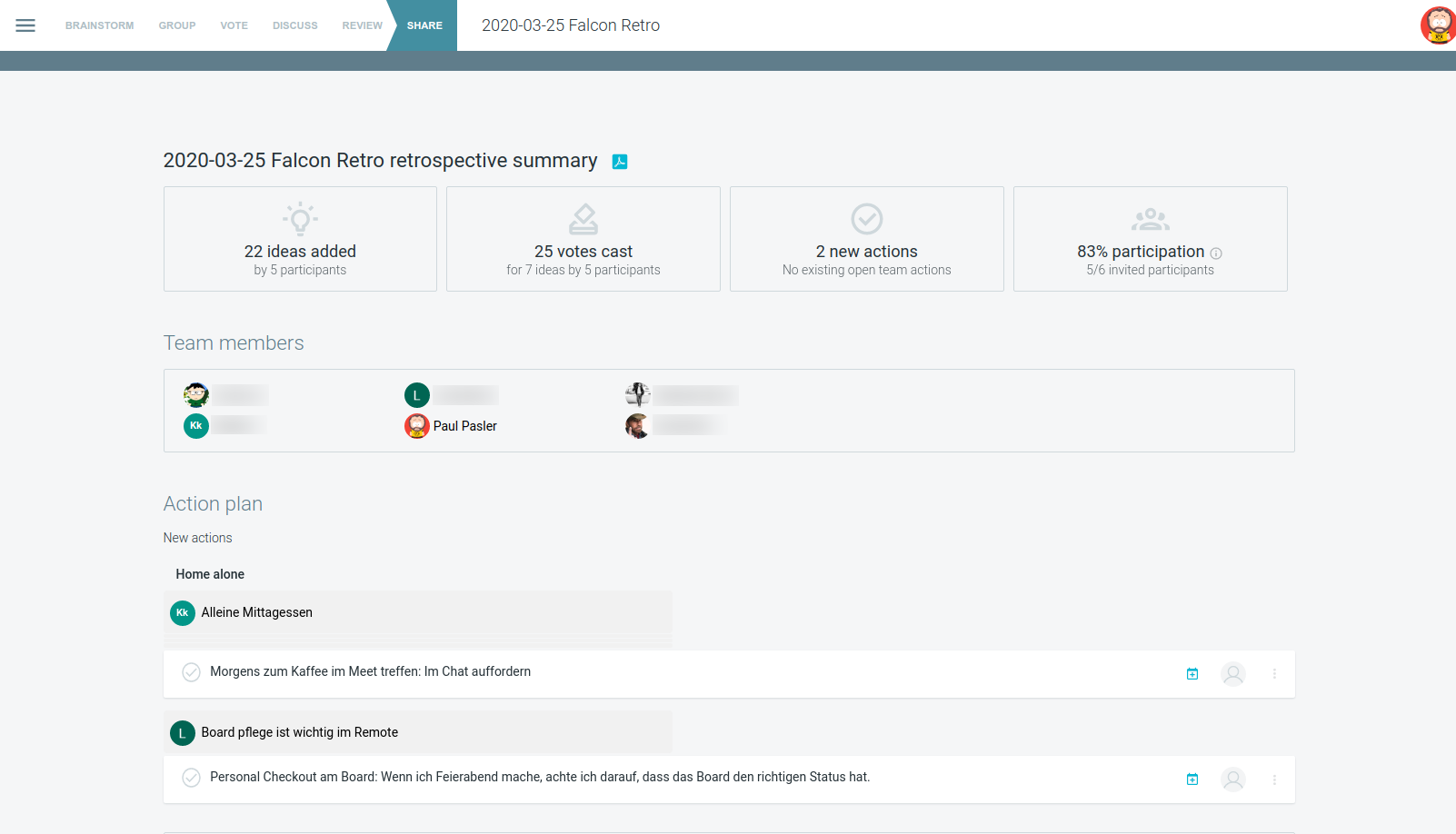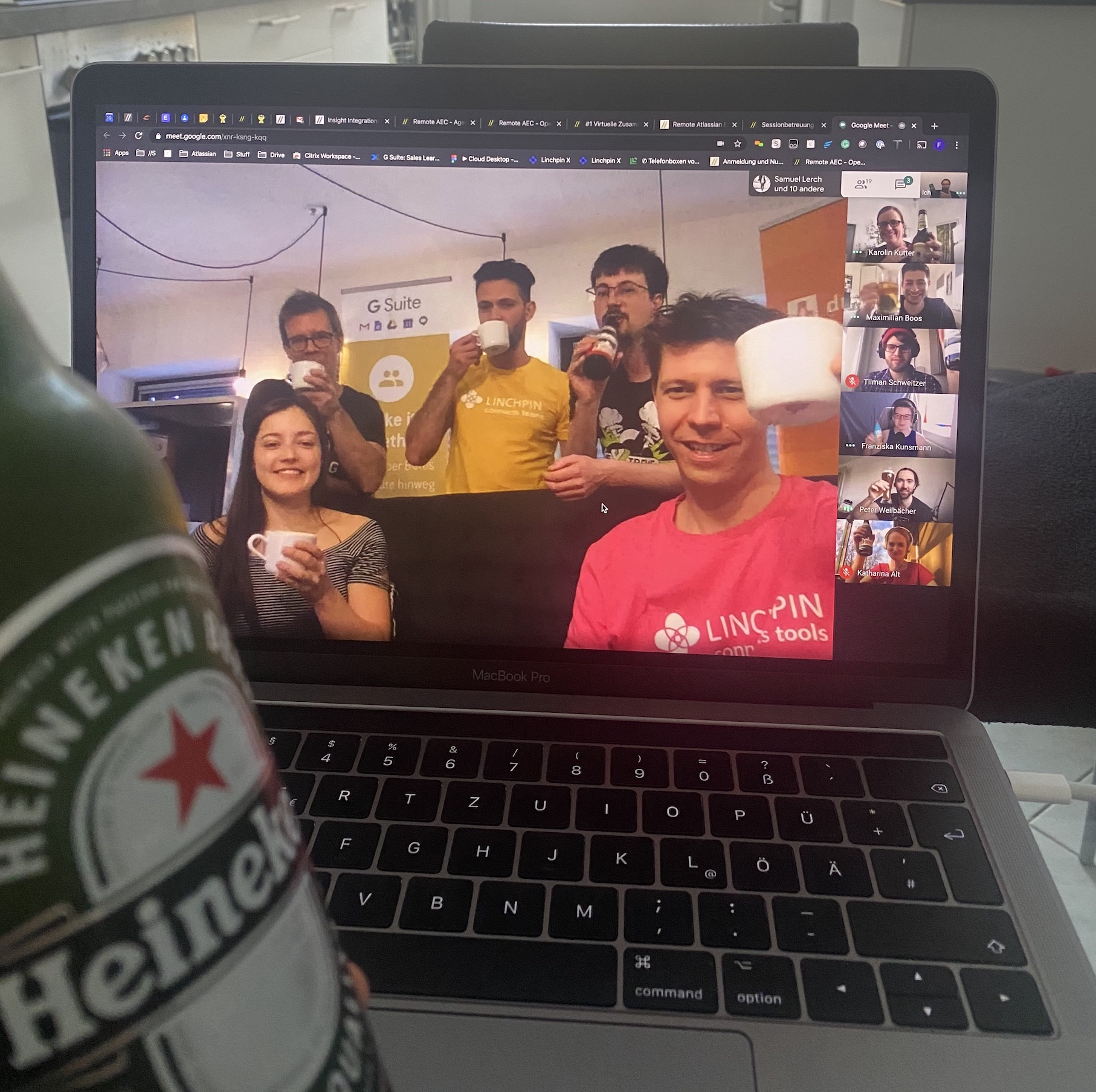Read Part 1 of Our Journey to Working Remotely at //Seibert/Media
The current situation has caused us to look into new forms of collaboration. How does teamwork work when the team members aren't all in one place? What can support smooth collaboration, and what are the most important factors?
As someone who works from home in general, I have gained a wide range of insight into this over the last few years. However, it's something completely different when suddenly an entire company is forced into remote work overnight. I previously shared a general overview of the measures we took in the first post I wrote on the subject. Now I'd like to expand upon that.
Creating space for team communication
A significant hurdle in working from home is the lack of personal contact. A quick smile, a "hello" or "how are you?" - all of this has fallen away. This form of social interaction that happens randomly in the office no longer exists in this new context. In these times of social distancing, we have to actively take time for these situations. To that end, we established the digital tea kitchen as mentioned in my first post. The same applies to everyday collaboration within a team.
One of the lessons I've learned from almost five years of remote work is, that scheduled remote meetings are not enough to share all the vital information. Much is transmitted "on the side" or results from short discussions in between.
Therefore, it makes sense and is necessary to create a space where this communication can take place. Before Corona, we had a special set-up so that I could participate in the everyday life of my team.
Now, it's still more of the same except that the rest of my team is at home too. Other teams have now adopted this approach and have had positive results. Another strategy is to seek one-to-one conversations from time to time, even without a specific reason. Often the most exciting discussions develop from those situations
Rules for Remote Meetings
In addition to those kinds of informal discussions, there are, of course, still regular meetings - both planned and unplanned. Regular meeting etiquette has also changed due to our new situation. The more people there are in a Hangouts meeting call, the greater the danger of interjections or silence.
A few rules will undoubtedly help here: for example, a headset with an integrated microphone significantly increases the sound quality for the other participants. Also, it has proven to be a good idea to mute the microphone when you have nothing to say. Depending on the number of people who are currently online, a list of speakers is also useful, organized by hand signals or a message in the integrated chat.
Retrospectives with members in different locations
A special Scrum meeting is called a retrospective. It is often less about facts than about feelings and sensitivities. Body language or subtle nuances of speech is much easier to interpret in person than on camera. This is where the Scrum masters, in particular, are called upon to moderate.
In retros, most teams like to work with pictures and large flipcharts. Sticky notes are also part of the standard equipment to collect topics of conversation. Our Scrum Masters and Agile Coaches have, therefore, started looking for suitable digital tools. We have so far had good experiences with Miro and TeamRetro.
PI-Planning in digital format
In addition to team meetings, which usually consist of five to eight people, we also have cross-team collaboration. In this case, this can consist of between 20 to 30 people. For example, our PI planning involves three Scrum teams who are required to synchronize their tasks for the next ten weeks.
We start with a big opening round for everyone. Afterward, there is a theme marketplace where smaller groups take care of individual features and planning. Then, later, the results are presented in the larger group.
To replace the use of regular flipcharts for the presentation of the results, we've turned to Atlassian Confluence wiki pages for each group. For us, this approach has the advantage that the complete documentation is already in the wiki, and several people can work on it collaboratively.
Remote events with 180 participants
Even more significant was our Atlassian Enterprise Club Day at Linchpin. In March, we invited over a hundred customers and partners to exchange ideas and present our latest developments. Shortly before the event, the Corona crisis hit which obviously affected our ability to host a live event. The decision to convert the AEC into a purely remote event was only made a few days prior.
The preparation, organization, and implementation took a lot of effort and energy, and this remote event could only be realized through the close cooperation of several teams. It was, however, deeply rewarding. We were proud of what we achieved and the positive feedback. If you are interested, read what went on behind-the-scenes at this year's Remote-AEC Linchpin.
The planned lectures could be realized relatively quickly streaming via Youtube. We already have hosted numerous internal and external events via stream so this wasn't too much of a challenge to carry out. A somewhat more significant challenge was the remote implementation of an Open Space discussion. How could we create a situation where 180 participants were to suggest and coordinate topics and then discuss them together in the individual sessions?
In no time at all, we came up with ideas on how to carry out this part of the event with the tools we were already familiar with. A mixture of Google Hangouts Meet and Atlassian Confluence (in this case, our extranet) was used here as well. Mentimeter was used for the voting of the topics. Each slot had its own meet, including a wiki page. In contrast to PI-Planning, we had a dedicated moderator for each slot as well as one person for the technical management and for the protocol.
"Over-Communication" is now the goal
From my point of view, the most significant limitation in the (permanent) home office is communication. Casual communication, face-to-face conversations, and non-verbal information can only be partially mapped remotely. That is why I think it is essential to make take advantage of all tools available for remote work.
Martin Seibert once called this "over-communication". That means spending as much time as possible with colleagues in video chats. Sharing messages in the chat, microblog, or wherever else information is circulating. Working together on documents or code. And finally: Talking not only about work topics but also about everyday things.
On that note: Cheers!
Further information
Continuation of our services during the Corona crisis
Remote meetings: Open-mindedness and willingness to experiment leads to better results
Shared software: How to turn remote workers into a team
Learn more about Creative Commons licensing and //Seibert/Media






